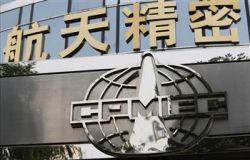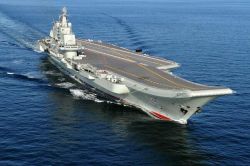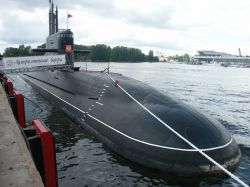China’s Galloping Defence Exports

China’s military industry has over the last five years supplied major weapons to 35 developing countries. While there are no official figures of actual sales, experts estimate this number to be in the billions.
According to the Stockholm International Peace Research Institute (SIPRI), China became the world's fourth biggest supplier in major weapons over the past five years after the US, Russia and Germany.
Chinese exports of major weapons increased by 212 percent during 2009-2013, compared with the previous five-year period, and China's share of global arms exports increased from 2 to 6 percent, the SIPRI report said. Almost three-quarters of Chinese exports went to just three clients: Pakistan, Bangladesh and Myanmar.
Since the report was published China, among its most notable sales this year, won a contract from Myanmar to supply 4 system of air defense missile midrange KaiShan 1A (also known as KS-1A), export variant of the Hongqi-10 (HQ-12) of China, to equip a regiment of air defence. With this agreement, Myanmar has become the first foreign country to use anti-aircraft missile system KS-1A. Delivery of the systems is expected to begin this year.
In March, China and Pakistan signed an agreement worth approximately $6 billion for the procurement of six Yuan-class diesel-electric submarines.
China and Pakistan have been involved in various joint defense projects, ranging from production of advanced JF-17 Thunder fighter jets to marketing of locally manufactured Al-Khalid tanks.
"China engages in both arms sales and defence industrial cooperation with Islamabad, including co-production of the JF-17 fighter aircraft, F-22P frigates with helicopters, K-8 jet trainers, F-7 fighter aircraft, early warning and control aircraft, tanks, air-to-air missiles, anti-ship cruise missiles, and cooperation on main battle tank production," according to a Pentagon report released last year.
China is also to sell two 035G Ming-class diesel-electric submarines to Bangladesh by 2019, in line with a contract worth $206 million.
In addition to that, the Bangladesh Air Force purchased one squadron (Sixteen) of F-7 BGI fighter planes from Beijing.
Earlier in March, Prime Minister Sheikh Hasina said the Bangladesh navy would get two submarines by 2015 and the process of construction of a submarine base was underway.
According to IHS Jane’s, Bangladesh was the second biggest importer of Chinese arms, spending over $350mn in 2012. SIPRI data shows Bangladesh procured anti-ship missiles, tanks, fighter aircrafts and other arms from China between 2008 and 2012.
Earlier this month, Saudi Arabia signed a contract to buy an unknown number of Wing Loong medium-altitude long-endurance unmanned aerial vehicles from China, according to the Global Times.
Citing Russian military news, the Global Times said Saudi crown prince Salman sealed the deal with People's Liberation Army general Wang Guanzhong during a visit to China in mid-April, making Saudi Arabia the first Arab country to acquire the drone.
Meanwhile, deliveries of major arms from China to sub-Saharan Africa are estimated to have grown from just 3 percent of the total volume between 1996 and 2000 to 25 percent from 2006 to 2010, the report said.
Chinese-made rifles and incendiary ammunition have been found in the Darfur region of Sudan, while rocket-propelled grenades from China have been seen in Somalia. Chinese rifles have also been discovered in the Ivory Coast.
China’s growing ambitions as an arms export is reflected by a statement made by Aviation Industries Corporation of China's (AVIC) Chairman Lin Zuoming at the Paris Air Show in 2013. He echoed two clear missions for AVIC. “One, to develop aviation technology to keep pace with those powerful aviation industry countries; the other is to make our company a world top multinational corporation.”
Zuoming said AVIC has achieved fast growth in ‘munitions’ export and that there is still a large ‘developing space’ for export of aircraft and weaponry. Elaborating further on his company’s ambitions, he said the reason for the American and Russian military aviation industries to grow was the NATO and Warsaw Pact markets respectively which enabled them to supply to a net of partners.
“Therefore, while we do munitions trade, we should expand our thinking to turn a single or a few munitions trade partners into a net of partners,” he said.












